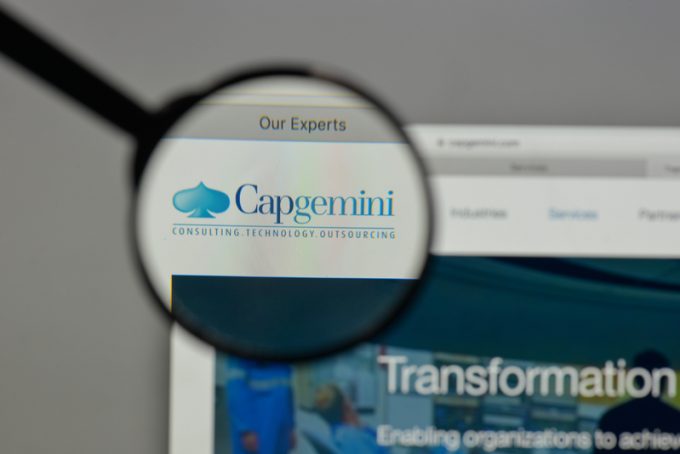AD Ports' Noatum buys Spanish finished vehicle logistics specialist
Less than a year after buying Spanish ports and logistics group Noatum in a $660m ...
TFII: SOLID AS USUALMAERSK: WEAKENINGF: FALLING OFF A CLIFFAAPL: 'BOTTLENECK IN MAINLAND CHINA'AAPL: CHINA TRENDSDHL: GROWTH CAPEXR: ANOTHER SOLID DELIVERYMFT: HERE COMES THE FALLDSV: LOOK AT SCHENKER PERFORMANCEUPS: A WAVE OF DOWNGRADES DSV: BARGAIN BINKNX: EARNINGS OUTODFL: RISING AND FALLING AND THEN RISING
TFII: SOLID AS USUALMAERSK: WEAKENINGF: FALLING OFF A CLIFFAAPL: 'BOTTLENECK IN MAINLAND CHINA'AAPL: CHINA TRENDSDHL: GROWTH CAPEXR: ANOTHER SOLID DELIVERYMFT: HERE COMES THE FALLDSV: LOOK AT SCHENKER PERFORMANCEUPS: A WAVE OF DOWNGRADES DSV: BARGAIN BINKNX: EARNINGS OUTODFL: RISING AND FALLING AND THEN RISING

Supply chains have undergone profound change over the past three years, but the transformation is far from complete.
According to a study by tech consultancy Capgemini there is a long road ahead for companies, including a sourcing reversal from global to regional locations.
It predicts a shift of 25% of global trade within three years; currently 57% of goods are sourced abroad, versus 43% domestically, which will switch to in-country accounting for 57% of procurement.
The disruptions that have shaken supply chains, and worries about future crises, are prompting firms to scale down procurement from afar, “to ensure there is no dependence on war-constrained countries or vulnerability to supply chain disruptions, such as the recent blockage of the Suez Canal”, said Houssam Have, SVP of supply chain of automotive firm Stellantis, who contributed to the Capgemini study.
He was one of 1,000 supply chain executives at large firms the consultancy canvassed last August.
The trend towards on- or near-shoring is not the only “tectonic shift in supply chain strategy”, the study predicts. After more than two years, during which survival was the main priority for companies, the focus has shifted to cost optimisation.
Last year, 32% of respondents were focused on optimising transport costs, down from 57% two years earlier. Capgemini found that 45% of organisations were absorbing a significant portion of these costs.
Asked for their top priorities, 58% mentioned operational efficiency and cost reduction; resilience was highest for 53% and agility to support new business models the priority for 49%. The next two elements – customer experience and sustainability – scored significantly lower, 26% and 22% respectively.
The task ahead for supply chain executives is massive, the study says. Only one in five considered their organisations equipped to handle supply chain challenges consistently, and five in six felt ill-equipped to embrace the “new supply chain paradigm of a digital intelligent model that can accommodate the traditional signposts of customer experience and a global value chain with flexibility and sustainability”.
Only a quarter of firms are working on end-to-end supply chain transformations that will integrate front and back offices, and only 6% ssaid they were equipped to balance just-in-time and just-in-case strategies.
Only 15% felt they were well-equipped to handle a relocation of their global supply chain and nearly half (46%) had mature e-commerce and order management systems, while many see weakness in their planning and ecosystem collaboration.
Only 11% have the ability to address smart forecasting and integrated business planning, and 14% feel they can adequately address supply chain control tower and end-to-end performance management.
Capgemini says intelligent network design and systemic risk management are essential for a better balance of supplier networks, but only 23% of those surveyed believe they can address this.
Meanwhile, companies are looking to their supply chain service providers for solutions and should check what their counterparts in organisations that have advanced further have done, suggests Capgemini.
The study identifies certain “supply chain masters” which can “successfully balance multiple demands on their supply chains”. These account for just 9.5% of the respondents and reported 15% incremental revenue growth, 17% higher reduction in CO2 emissions and a 1.8% higher market share.
“It is clear that there’s no ‘one-size fits all’ solution, but organisations that lay the foundation for a data-driven, technology-enabled, scalable and sustainable supply chain are the ones that will reap the most impressive returns,” said Maynak Sharma, global supply chain lead at Capgemini.
Comment on this article